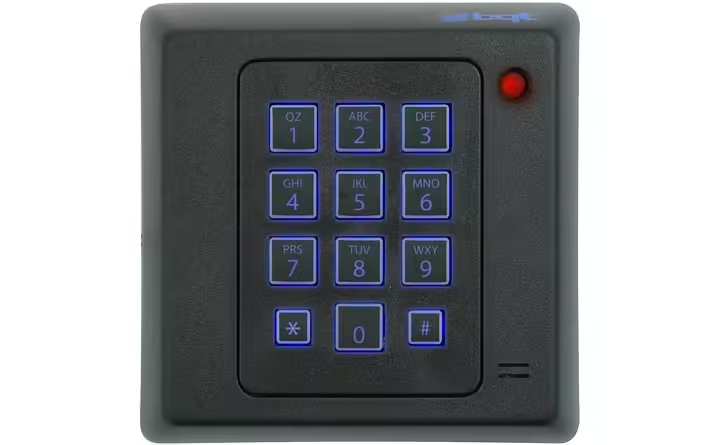Understanding Biometric Access Control: Pros and Cons
AK-AI2024-09-08T08:46:01-04:00Understanding Biometric Access Control: Pros and Cons
In the fast-evolving landscape of security, biometric access control is emerging as a pivotal technology, redefining how we authenticate identity and grant permissions. This cutting-edge technology utilizes unique physical or behavioral characteristics—such as fingerprints, facial recognition, iris patterns, and even voice recognition—to verify individuals’ identities, offering unprecedented levels of security and convenience. As with any technology, however, it comes with its sets of advantages and challenges. This in-depth analysis examines the multifaceted aspects of biometric access control, aiming to provide a balanced view of its pros and cons in today’s digital age.
The Advantages of Biometric Access Control
Enhanced Security
The most pronounced advantage of biometric access control is the significant enhancement in security it provides. Traditional access control systems, such as those requiring PINs, passwords, or physical tokens like keys or cards, can be lost, stolen, or duplicated. Biometric characteristics, however, are inherently unique to each individual and, therefore, far more difficult to replicate or steal. This uniqueness significantly diminishes the risk of unauthorized access, making biometric systems a formidable barrier against security breaches.
User Convenience
Beyond security, the convenience offered by biometric systems is unparalleled. The hassle of remembering passwords or carrying physical keys is eliminated. Access is granted through a simple, quick process such as a fingerprint scan or facial recognition, streamlining entry procedures and ensuring a seamless user experience. This ease of use does not just enhance user satisfaction but can also translate into increased efficiency and productivity within organizations.
Non-transferrable Authentication
One of the intrinsic benefits of biometrics is that authentication information is intrinsically linked to the individual, making it nearly impossible to transfer or share access credentials inadvertently or maliciously. This feature is crucial in high-security areas where access control must be strictly managed and audited.
The Challenges and Cons of Biometric Access Control
Privacy Concerns
Despite its advantages, biometric access control raises significant privacy concerns. The collection and storage of biometric data pose a potential risk to individual privacy, especially if the data is mishandled, stolen, or inappropriately accessed. Ensuring that biometric data is securely stored, transmitted, and used in compliance with privacy laws and ethical standards is a significant challenge that organizations must navigate carefully.
Potential for Error
No technology is foolproof, and biometric systems are no exception. Issues such as false positives—where an unauthorized person is mistakenly granted access—or false negatives—where a legitimate user is denied access—can occur. These errors can be caused by poor quality sensors, changes in biometric traits over time, or even attempts to deceive the system using high-quality replicas. Regular system updates and maintenance, along with the integration of additional authentication factors, can help mitigate these risks but cannot eliminate them entirely.
High Initial Costs and Maintenance
Implementing biometric access control systems can be expensive. The costs encompass not only the initial outlay for purchasing the biometric hardware and software but also expenses related to system integration, ongoing maintenance, and updates. For some organizations, particularly small to medium enterprises (SMEs), these costs can be prohibitive, making biometric systems less accessible.
Balancing the Scales: A Future Perspective
As we navigate the complexities of biometric access control, it’s clear that the technology presents a powerful tool for enhancing security and operational efficiency. The path forward requires a balanced approach that maximizes the benefits while effectively addressing the challenges. This entails ongoing technological improvements, robust legal frameworks to protect privacy, and strategies to make biometric systems more affordable and accessible.
Conclusion
Biometric access control stands at the forefront of security technology, offering a compelling mix of enhanced security, convenience, and efficiency. While it is not without its challenges—ranging from privacy concerns to the potential for errors and high costs—the future of biometrics is undoubtedly promising. As technology advances and societal acceptance grows, biometric access control systems are set to become even more integrated into our daily lives, offering a more secure and seamless experience.
For those looking to embrace this technology, it is crucial to stay informed, weighing the pros and cons carefully to make the best decisions for your specific security needs. As no external links were provided or requested, I recommend consulting recent publications, expert analysis, and product reviews in reputable tech journals and websites for the latest information and recommendations on biometric access control systems. Remember, in the realm of security, knowledge is not just power—it’s protection.
Discover more from Akiatech Solutions Blog
Subscribe to get the latest posts sent to your email.
